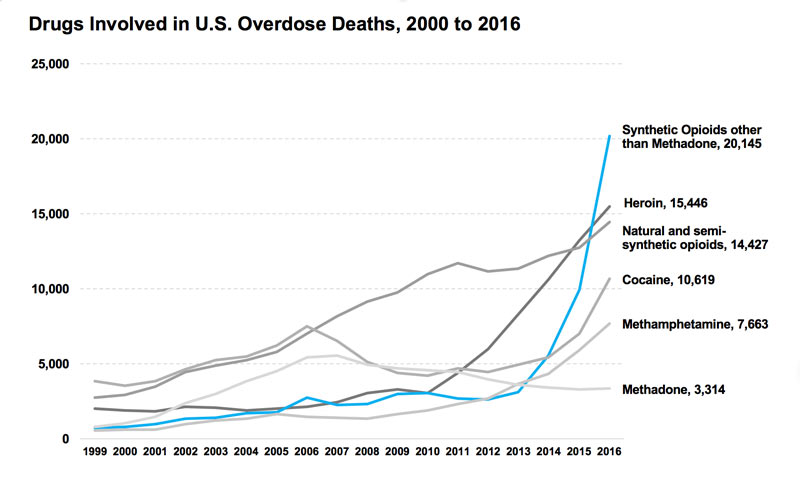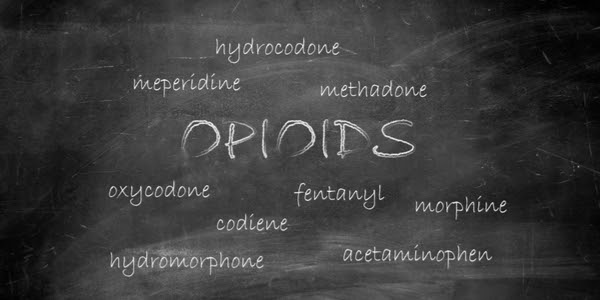What You Need to Know About Medication Assisted Treatment
June 11, 2018

As more attention is brought to the opioid epidemic in Iowa, awareness of the available healthcare options to combat this fatal crisis remains virtually unknown. At UCS Healthcare, we provide an outpatient program to communities across Iowa known as Medication Assisted Treatment (MAT). Medication Assisted Treatment, in conjunction with therapy, is one of the most effective treatments for opioid dependence and substance use disorder. By the end of this article, you’ll see how methadone is just one way UCS Healthcare is utilizing a widely accepted and regulated practice to confront the opioid epidemic head-on.
What exactly is an opioid?
According to the National Institute on Drug Abuse, opioids are a class of drugs that include the illegal drug heroin, synthetic opioids such as fentanyl, and pain relievers available legally by prescription, such as oxycodone (OxyContin®), hydrocodone (Vicodin®), codeine, morphine, and many others.
Among the 63,635 drug overdose deaths in the United States in 2016, 42,249 (66.4%) involved an opioid. The sharpest increase occurred among deaths related to fentanyl and fentanyl analogs, or synthetic opioids, with over 20,000 deaths. 
How does MAT work as treatment for opioid and other addictions?
MAT stands for Medication Assisted Treatment. It is a combination of prescribed medication and counseling, creating a greater opportunity for patients to succeed in their long-term recovery.
Our belief at UCS Healthcare is that through required counseling, in conjunction with prescribed medication to reduce dependency cravings and withdrawal symptoms, our patients are given the opportunity to lead a productive life. This includes working, spending time with friends and family, performing the tasks of daily life – while being provided an all-encompassing support system through regular visits with a medical professional and therapy team.
Through our outpatient MAT treatment care, we are able to provide patients with a variety of medications, such as methadone and suboxone, to treat opioid use disorder at one of several certified treatment centers across Iowa.
What is Methadone?
Methadone is a synthetic, narcotic analgesic drug (or painkiller) used in the treatment of opioid dependency. It is available in oral forms for prescription use, and sometimes pain management clinics will prescribe this instead of Vicodin® or OxyContin®. At UCS Healthcare, we offer methadone in a liquid cherry form similar to cough medicine.
Often times we see the onset of opioid dependency begin with chronic pain. Due to the pain-blocking effects of opioids like morphine, hydrocodone, oxycodone, codeine and fentanyl, these drugs have proved to be excellent painkillers; however, they are only administered as such in instances of severe, persistent pain due to their potential side effects — including their addiction potential.

On the surface, methadone mimics the substances it was made to replace: morphine and other opiates. Methadone is an opioid agonist, which means it binds to the opioid receptors in the brain and activates them, leading to pain relief. Unlike morphine, however, methadone’s effects are absorbed into the body slowly, offering pain relief without the impaired characteristic of other opioids.
While the use of methadone has been widely considered an effective method of treatment for reducing symptoms of withdrawal in individuals experiencing narcotic addiction, it can still be abused. As a result, patients who are receiving Medication Assisted Treatment must visit our clinic daily to get their dose of methadone before they earn privileges to take it home.
Long-Term Side Effects
Even though methadone is widely used and accepted in Medication Assisted Treatment, it is still an opioid with dependence potential.
At UCS Healthcare, we always follow federal regulations and start patients at 30mg/day after extensive counseling and evaluation. Patients taper their dose when possible.
Suboxone®: A Methadone Alternative
In addition to methadone treatment, patients of UCS Healthcare also have the option of using Suboxone to treat their opioid dependency. Administered in a film form under the tongue or cheek, Suboxone is a combination of two different substances: buprenorphine (a partial opioid agonist) and naloxone (a pure opioid antagonist).
As a partial opioid agonist, buprenorphine’s job is to deliver weakened opioid doses to a patient who is addicted to a stronger opioid. It allows the patient to be gradually weaned off of their pre-existing addiction while minimizing the withdrawal symptoms that come with the process.
The other drug in suboxone is naloxone, a pure opioid antagonist.
Naloxone is used to discourage injection of buprenorphine. Because it is in the film format, Naloxone is poorly absorbed sublingually and orally but if injected it can reduce the agonist effects of buprenorphine and may precipitate unpleasant withdrawal symptoms in people who are opioid dependent.
Buprenorphine is an opioid partial agonist. This means that, although Buprenorphine is an opioid, and thus can produce typical opioid effects and side effects such as euphoria and respiratory depression, its maximal effects are less than those of full agonists. At low doses, Buprenorphine produces sufficient agonist effect to enable opioid-addicted individuals to discontinue the misuse of opioids without experiencing withdrawal symptoms. The agonist effects of Buprenorphine increase linearly with increasing doses of the drug until it reaches a plateau and no longer continues to increase with further increases in dosage. This is called the “ceiling effect.” Thus, Buprenorphine carries a lower risk of abuse, addiction, and side effects compared to full opioid agonists. In fact, Buprenorphine can actually block the effects of full opioid agonists and can precipitate withdrawal symptoms if administered to an opioid-addicted individual while a full agonist is in the bloodstream.
What to Expect at a UCS Healthcare Medication Unit
Upon walking into a UCS Healthcare Medication Unit, patients can expect to meet with a substance use disorder counselor for an assessment. The assessment will determine each individual’s level of need; namely, if MAT is right for them, or if in-patient services at another clinic would be more beneficial. All UCS Healthcare locations and most of our treatment partners offer walk-in assessments.
Check with the UCS Healthcare medication unit location nearest to you to see if a walk-in assessment is an option. Know that you may have to wait for an hour or two at most during a walk-in, but we do our best to get you in as quickly as possible. The walk-in hours at our clinics vary, so please check with the specific location that is most convenient for you.
While patients are more than welcome to bring friends or family with them to their assessment, we encourage everyone to do this portion of their recovery treatment on their own. In our experience, patients who take the assessment alone are more honest.
If UCS Healthcare’s MAT program is a reasonable fit, patients receive an identification number and can use this to check in on their next visit.
Upon their return, patients will meet with their counselor to keep their road to recovery top of mind. From there, patients will meet with our pharmacist or nurse to receive their medication. In the case of methadone treatment, patients start with 30mg of methadone daily. If needed, UCS Healthcare administers steady dose increases until the patient is stable.
In order for patients to receive their medication, they need to visit our clinic on a daily basis. With time, and upon a negative urinalysis, patients can earn take-home privileges — two weeks worth of methadone to take at home.
The end goal is for people to be able to resume their normal lives with no withdrawal symptoms. While some patients are able to detox off of methadone all together, we would never tell someone when it’s time to detox. Because each opioid dependence and substance use disorder case is unique, there is no timeframe for how long a patient can be in our MAT program. Medication Assisted Treatment takes time and patients need to progress at their own pace. Through our research and independent studies, we have found that MAT is up to 70 percent effective with counseling.
Take some time to check out how MAT is used by the Substance Abuse and Mental Health Services Administration.

Start Your Treatment Today
The opioid epidemic in the United States continues to worsen. At UCS Healthcare, patients are treated with respect and dignity. There is no stigma, no judgement. If you or someone you know is suffering with opioid dependency, take the first step: contact UCS Healthcare to make an appointment today. Together, we can help you work toward recovery from opioid addiction.
Contact us today for more information.
Click here to see the locations where UCS Healthcare offers medication assisted treatment.